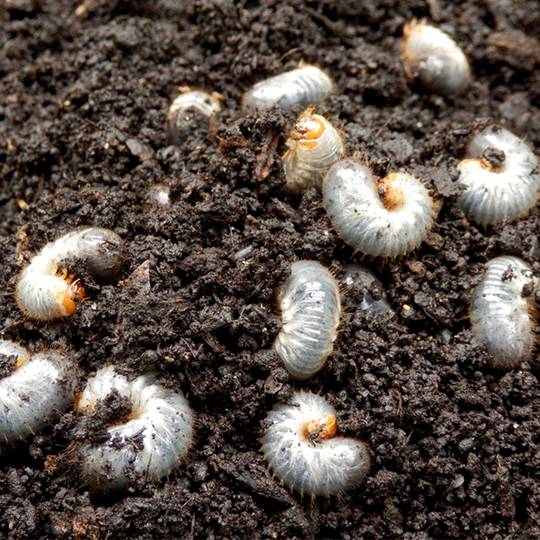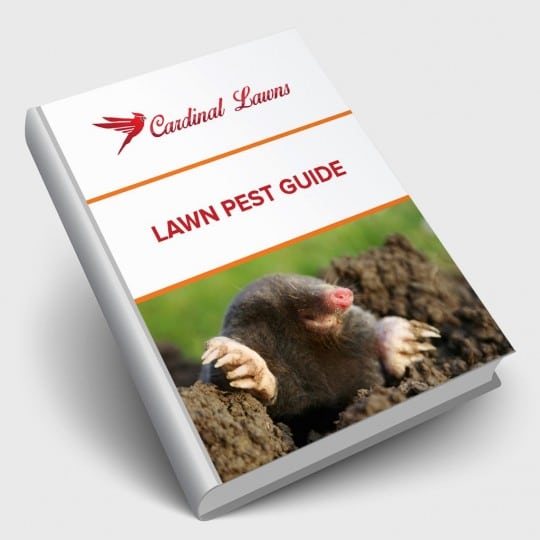Grub Control: White Grub Alert!
Posted
June 16, 2016

White grubs can cause serious damage to an otherwise healthy lawn. Usually the larvae of Japanese beetles, the masked chafer, or June beetles, they feed on grass roots in summer, causing brown patches of turf that pull up easily. While maintaining a healthy lawn is your best defense, there are numerous ways to fight off white grub invasions. Read on to find out more about white grub control.
White Grub Identification
True to their name, white grubs are white in color with brown heads. These critters are curved in shape with puffy bodies and feet on their upper torsos. White grubs live from one to three years, depending on their species.
Spotting a White Grub Infestation
When treating for white grubs, an early attack is best. This means applying a control method early in their life cycle–usually in July or August. When deciding on a treatment, it can be helpful to sample your lawn first to see how many grubs you’re dealing with. Take some samples of sod from different spots on your lawn (about one square foot in size) and study the soil for the presence of white grubs. If fewer than five per sample are there, grub control may not be necessary, but if you see more than 10, it is. Take into account your lawn’s overall health and stress tolerance before the next step: choosing a treatment method.
Grub Control: Natural Methods
- Beneficial nematodes: these microscopic worms attack the larvae in the soil. By entering the white grubs through their mouth or anus, they emit a bacteria from their intestines that kills the grubs in a matter of days.
- Milky spore: this natural bacterium can take years to establish itself in your soil and is only effective on white grubs.
- Soil conditions: grubs thrive in moist soil, so refraining from watering your turf in dry weather can potentially destroy a grub population.
Grub Control: Chemical Methods
- Repeat offenses: yearly grub attacks can warrant preventative measures. Preventative chemical treatments are rarely effective, given the inconsistency of grub infestations every year, but if you’re used to annual infestations, an application in late spring can help keep the white grubs at bay in the coming months.
- Timing: grubs feed near the surface of the soil earlier in their life cycle (in July and August). This is the best time to apply a chemical insecticide.
- Help the process: be sure to water your lawn after applying a chemical insecticide. This helps the product penetrate through thatch to help the grubs make their way toward the surface of the soil.
Seek Professional Assistance
White grubs aren’t always easy to banish yourself. The experts at Cardinal Lawns are here to help you deal with an infestation. Contact us at 614-808-4446 and we’ll work together to keep your yard free of white grubs.

Download Your FREE Lawn Pest Guide
Pests become most prevalent during the heat and humidity of summer. Take some time to learn about the signs of infestations before any damage can be caused to your landscape. This handy guide will teach you how to spot common lawn pests and how to keep them from causing harm to you and your property.